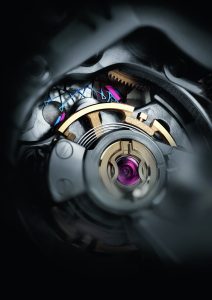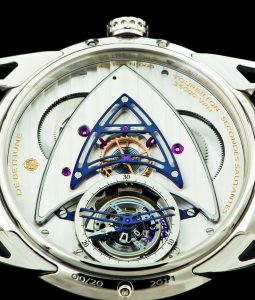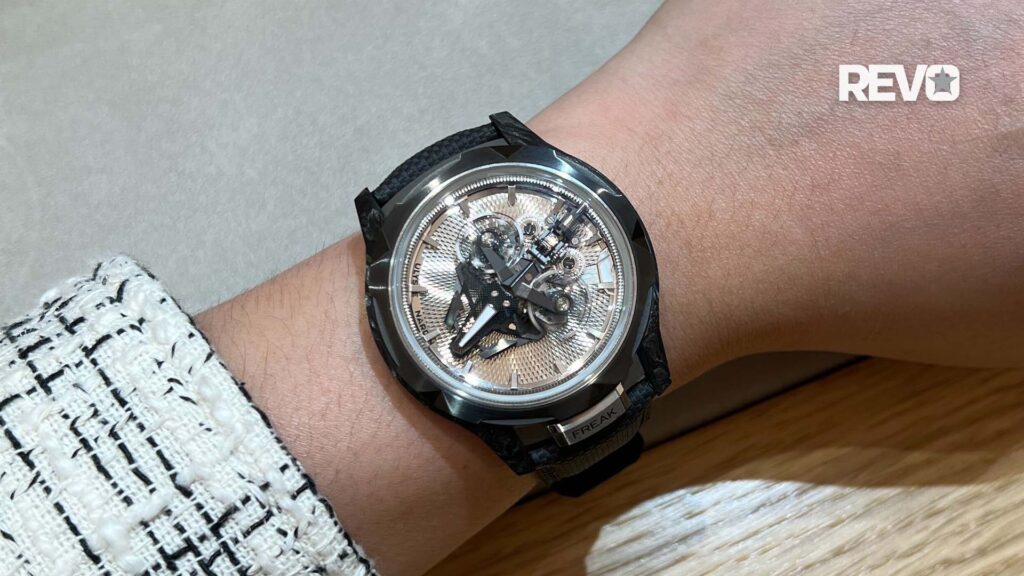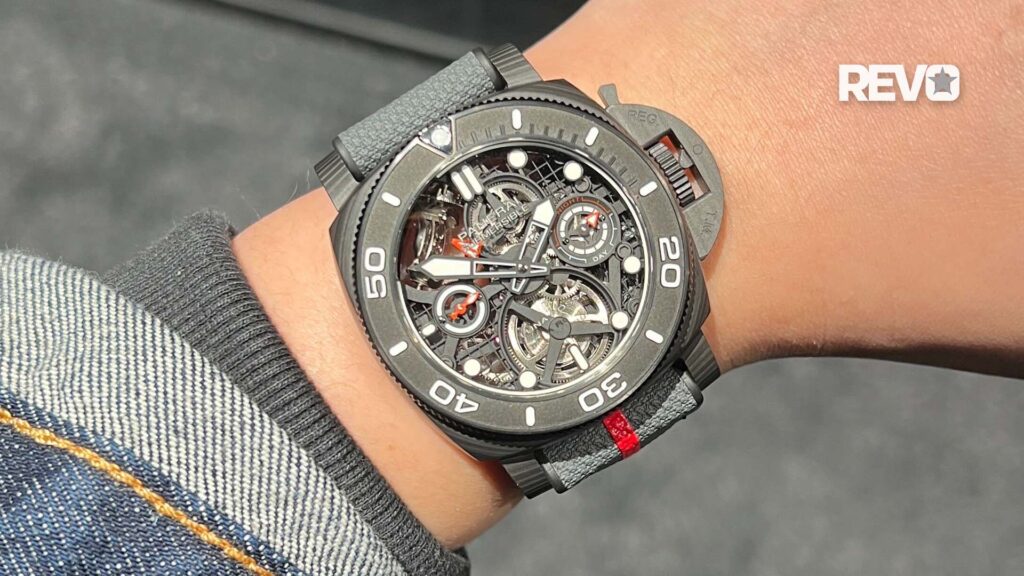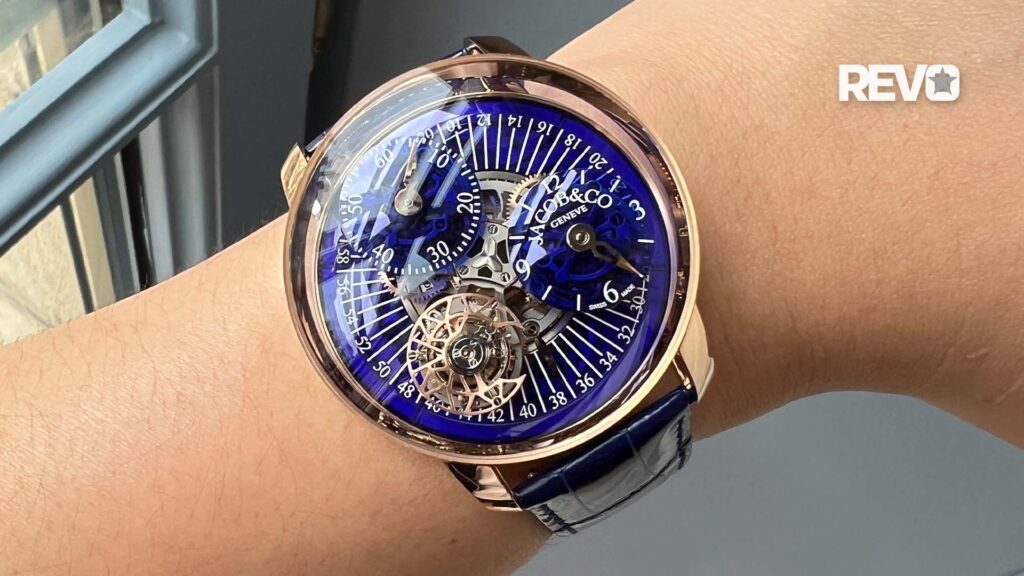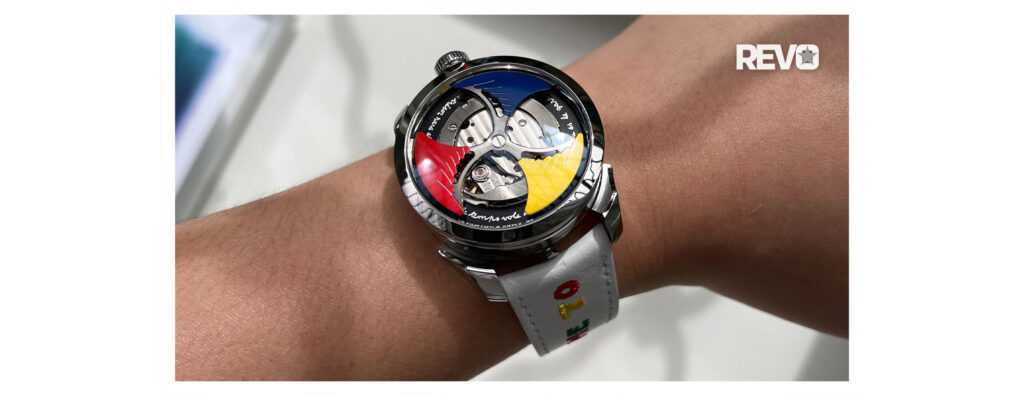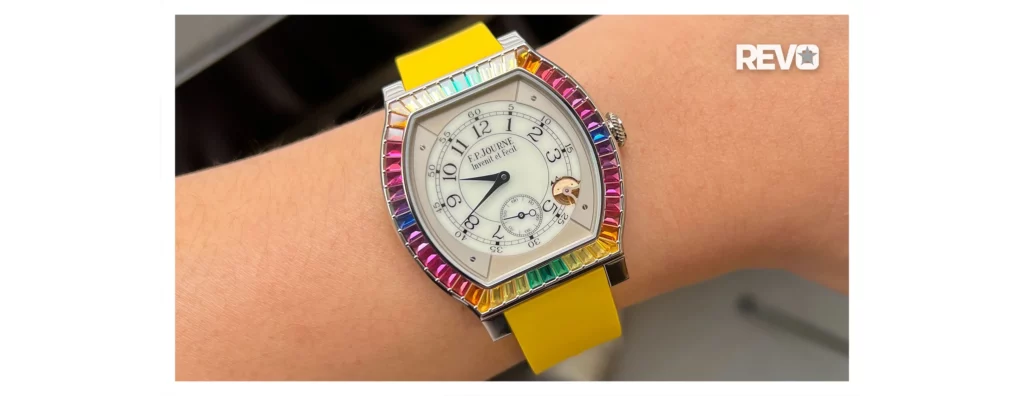Breguet
High Speed Escapements, Part 2: A Field Survey
New materials like silicon and production technologies have birthed a whole new generation of watches that shrug off centuries-old limitations
The year 2010 marked the introduction of the first serial-production chronograph beating at a frequency of 10Hz. Marking the 50th anniversary of the first delivery of the Type XX to the French naval air force in 1960, Breguet’s Type XXII boasts a frequency of 10Hz — thanks mainly to silicon, the element that makes 72,000vph possible with Breguet’s very light, skeletonized escape wheel weighing only 0.6 microns. The flat balance is also crafted in silicon. The chronograph’s seconds hand can thus indicate 1/20th of a second, currently the smallest division possible by a series-produced watch and twice the speed of Zenith’s Striking 10th, which beats at 36,000vph. Besides a gain in accuracy, this watch is noteworthy because of the extremely smooth motion of its seconds hand.
De Bethune’s 36,000vph, 30-second tourbillon with silicon-titanium balance wheel debuted in Dream Watch 3. Technical director Denis Flageollet says that the unique combination of low mass, high inertia and high frequency ensures superb timekeeping performance. In 2011, a further evolution appeared in the DB25T, a serial-production tourbillon beating at 36,000vph.
Chopard, too, is capitalizing on the gains that silicon brings, utilizing it in the high-beat escapement the company has been experimenting with for two years now. Karl-Friedrich Scheufele explained at BaselWorld 2011 that the company now has a finalized version and will introduce it in a limited edition by the end of the year. “Our aim in this is to capitalize on silicon technology in an original escapement,” the co-president said. This view is right in line with the progress the Geneva-based brand has made with its in-house L.U.C and Fleurier Ébauches movements. “Remaining loyal to our L.U.C philosophy, this will improve rate and stability, enjoy COSC certification, and provide our customers with genuine added value,” he said.
Chopard’s escapement, which has been granted two patents for interchangeability and the way the silicon parts are assembled and secured, brings five main advantages with it according to Scheufele: interchangeability, maintained or improved power reserve, better rate quality, the rate being less sensitive to shock, and a more fluid motion of the seconds hand. The escape wheel and pallet lever are made of silicon, while the balance wheel and spring continue to be crafted in traditional metals.
“To be clear: this is not about the race for a higher frequency. Our escapement is about added value for our customer,” remarked Scheufele, who is not sure if the final version will be set at 8Hz or 10Hz.
Japanese Speed
A little-known fact is that Seiko was also working on a high-beat escapement in the 1960s. Spurred on by Neuchâtel Observatory competitions — in its first competition, Seiko only placed 144. Ten years later, in 1968, it reached first place — the Japanese giant joined the rest of the industry in searching out a frequency aimed at greater precision.
Having mastered the 36,000vph frequency, Seiko added automatic winding in 1968 to create calibre 61GS, which was immediately followed by the manually wound calibre 45GS and even a smaller calibre for women’s timepieces called 19GS. By the following year, evolutions of these movements, calibres 61GS V.F.A. and 45GS V.F.A., delivered a rate deviation of only one minute per month.
In 2009, the company completed high-beat calibre 9S85 with a newly developed mainspring made of Spron 530, promising 50 per cent higher torque and 55 hours of power reserve; a balance spring crafted in Seiko’s own Spron 610 alloy; and an escape wheel and pallet lever created with Seiko’s MEMS technology (the brand’s in-house LIGA production). LIGA technology was necessary: like Breguet’s abovementioned example, the escape wheel is skeletonized as less weight can deliver lower inertia. It also boasts custom-shaped teeth designed to prevent extra wear and tear, and oil retention slots to keep lubricants solely where they should be: where the teeth engage the pallet fork. This calibre was officially introduced in 2010 as part of the 50th anniversary celebration of the Grand Seiko line in a model called the Grand Seiko Automatic Hi-Beat 36,000.
Don’t miss
High Speed Escapements, Part 1: History and Future
High Speed Escapements, Part 3: Different Approaches
Adapted from an article by Elizabeth Doerr, co-founder of Quill & Pad, in REVOLUTION’s archives.




